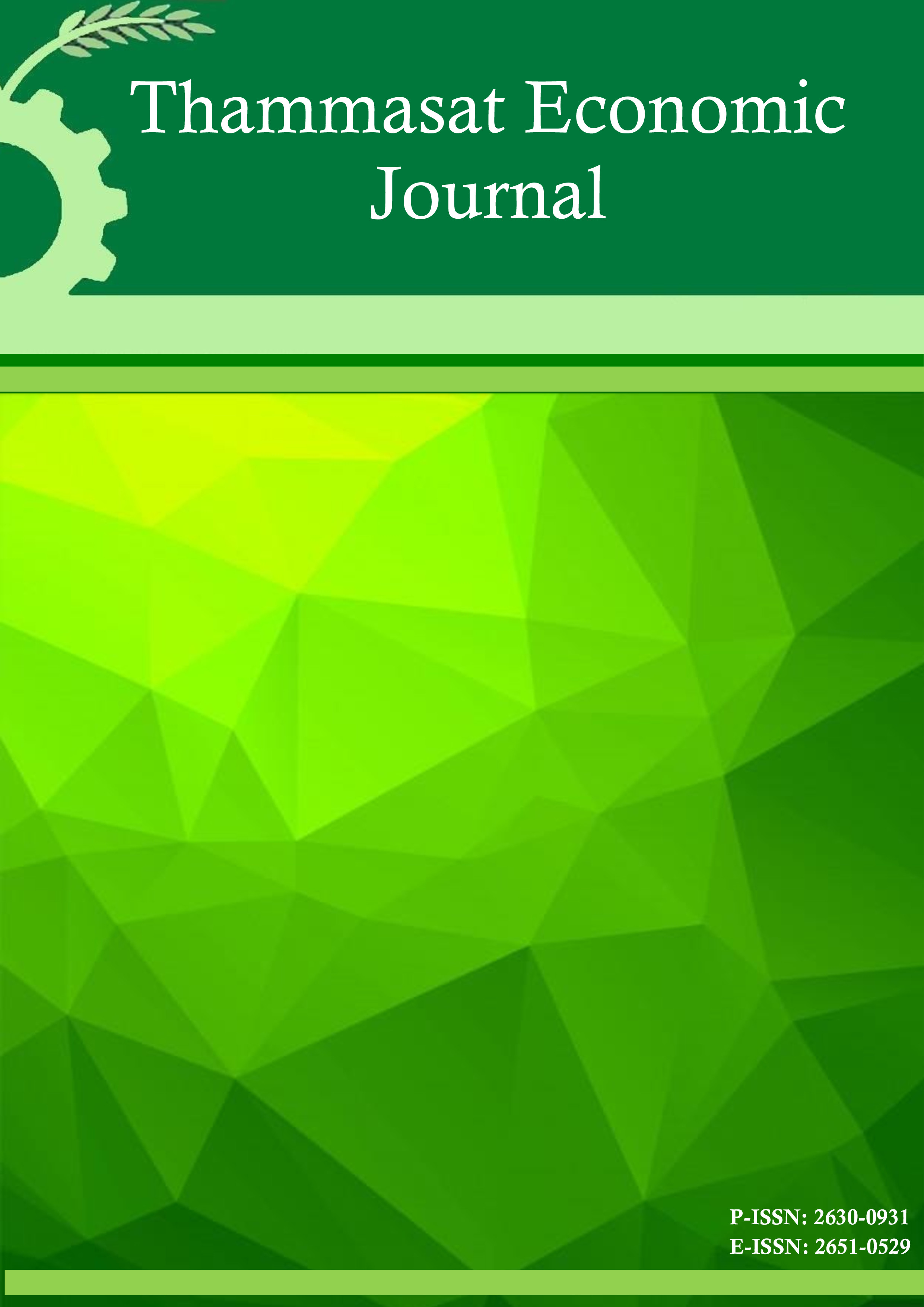Assessment of implicit prices for water resource improvement of tap water users in the downstream of the Ma Sa watershed, Chiang Mai province
Abstract
Population growth and the expansion of economic activities in the Mae Sa watershed has led to an increase in water demand. Additionaly, water shortages, especially in the dry season, have increased, and there has been a degradation in water quality due to excessive uses of agrochemicals and wastewater from various industries in the watershed areas. As the raw water used in tap water production by the Mae Rim Water Works in Chiang Mai province is mainly derived from the Mae Sa watershed, these negative externalities have inevitably affected the welfare of tap water users. Choice Experiments are used to elicit downstream tap water users’ marginal willingness to pay for the improvement of water resources by specifying relevant attributes along with other socio-economic factors. The results indicate the implicit price or the marginal willingness to pay of approximately 90 percent in addition to their usual payments for clean, non-chemical contaminated drinkable water. The demand for water resource improvement also suggests possibilities in developing payment schemes to compensate for soil and water conservative activities that would eventually benefit all the water users in the watershed areas.
References
2. มิ่งสรรพ์ ขาวสอาด อัมมาร สยามวาลา สมพร อิสวิลานนท์ อัจฉรี ศัสตรศาสตร์ กอบกุล รายะ-นาคร สมบัติ แซ่แฮ พิศสม มีถม พรเพ็ญ วิจักษ์ประเสริฐ จิราภรณ์ แหลงประพันธ์ ทิพวัลย์ แก้วมีศรี ปริญญารัตน์ เลี้ยงเจริญ อุกฤษฏ์ อุประสิทธ์ พรทิพย์ เธียรธีรวิทย์ ปิยะลักษ์ ชูทับทิม และจิตติ ตันเสนีย์. 2544. แนวนโยบายการจัดการน้าสาหรับประเทศไทย. กรุงเทพ: สานักงานกองทุนสนับสนุนการวิจัย.
3. วราภรณ์ ปัญญาวดี ชพิกา สังขพิทักษ์ วรพงษ์ พลกองแก้ว นงคราญ ประมูล ศักดิ์ดาเนิน นนท์กิติ เก นันทะเสน จิราภรณ์ ก้อนสุรินทร์ นุชจรี ปิมปาอุด และ นพดล สนวิทย์. 2553. การพัฒนารูปแบบ มาตรการเพื่อการจัดการทรัพยากรน้าบนพื้นที่สูงอย่างยั่งยืน โดยการมีส่วนร่วมในระดับลุ่มน้า กรณีศึกษาลุ่มน้าแม่สา จังหวัดเชียงใหม่. รายงานฉบับสมบูรณ์ เสนอต่อ สานักงานคณะกรรมการ วิจัยแห่งชาติ. คณะเศรษฐศาสตร์ มหาวิทยาลัยแม่โจ้.
4. Bech, Mickael and Dorte Gyrd-Hansen. 2005. “Effects coding in discrete choice experiments”. Health Economics (14). pp. 1079-1083.
5. Bennett, J. and W. Adamowicz. 2001. “Some fundamentals of environmental choice modeling”. In The choice modeling approach to environmental valuation. J. Bennett and R. Blame (eds). Edward Elgar. pp. 37-72.
6. Champ, Patricia A., Kevin J. Boyle and Thomas C. Brown (eds.). 2003. The Economics of Non-Market Goods and Resources A Primer on nonmarket valuation. The Netherlands: Kluwer Academic Publishers.
7. Fujita, Yasuo, Ayumi Fujii, Shigeki Furukawa and Takehiko Ogawa. 2005. “Estimation of willingness-to-pay (WTP) for water and sanitation services through contingent valuation method (CVM)- A case study in Iquitos city The Republic of Peru”. JBICI Review (10). pp. 59-87.
8. Glover, David. 2010. Valuing the environment: Economics for a sustainable future. Canada: The International Development Research Centre.
9. Haab, Timothy C. and Kenneth E. McConnell. 2003. Valuing Environmental and Natural resources The econometrics of Non-market Valuation. USA.: Edward Elgar Publishing, Inc.
10. Jyotsna Jalan, E. Somanathan and Saraswata Chaudhuri. 2009. “Awareness and demand for environmental quality: survey evidence on drinking water in urban India”. Environmental and Development Economics (14). pp. 665-692.
11. Louviere, J. J. and D. Hensher. 1982. Design and analysis of simulated choice or allocation experiments in travel choice modeling. Transportation Research Record (890). pp. 11-17.
12. Louviere, J. J. and G. Woodworth. 1983. Design and analysis of simulated consumer choice or allocation experiments: an approach based on aggregate data. Journal of Marketing Research (20). pp. 350-367.
13. Ortega-Pacheco, Daniel V., Frank Lupi and MichAel D. Kaplowitz. 2009. “Payment for environmental services: Estimating demand within a tropical watershed”. Journal of Natural Resource Policy Research (1). pp 189-202.
14. Pham Khanh, Nam and Tran Vo Hung Son. 2005. Household demand for improved water services in Ho Chi Minh City: a comparison of contingent valuation and choice modeling estimates. EEPSEA Research Report.
15. Snowball, J.D., K.G. Willis and C. Jeurissen. 2008. “Willingness To Pay For Water Service Improvements In Middle-Income Urban Households In South Africa: A Stated Choice Analysis”. South African Journal of Economics. pp. 705-720.










